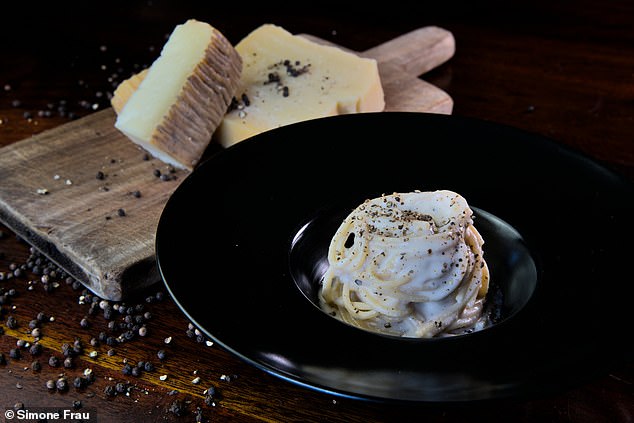
Science Debunks Traditional Pasta Method: Perfect Cacio e Pepe Recipe Excludes Pasta Water
The Science Behind Perfect Cacio e Pepe: No More Clumpy Cheese
[Image: A creamy plate of Cacio e Pepe with grated cheese and pepper garnish.]
Caption: Scientists have cracked the code to a smooth, clump-free Cacio e Pepe sauce.
Cacio e Pepe, the classic Roman pasta dish, seems simple—just pasta, Pecorino Romano cheese, and black pepper. Yet, home cooks often end up with a clumpy, stringy mess instead of the silky sauce served in restaurants. Now, Italian researchers have unveiled a foolproof method to master this dish, blending culinary tradition with physics.
Why Cheese Clumps—and How to Fix It
The key challenge lies in combining cheese with starchy pasta water. Cheese’s fats repel water, but pasta starch acts as an emulsifier. However, relying solely on pasta water’s natural starch is unreliable. Dr. Ivan Di Terlizzi and his team discovered that a 2-3% starch-to-cheese ratio is crucial for a smooth texture. They recommend using powdered starch (like potato or cornstarch) for precision, mixed with water to create a controlled emulsion.
[Image: A researcher mixing starch and cheese in a lab-like kitchen setup.]
Caption: Controlled starch measurements prevent clumping, ensuring a creamy sauce.
The Scientific Recipe
Serves 2
Ingredients:
- 300g pasta (tonnarelli, spaghetti, or rigatoni)
- 200g Pecorino Romano DOP cheese
- 5g potato/cornstarch
- 150g water
- Freshly ground black pepper
Steps:
- Starch Slurry: Dissolve starch in 50g water; heat until thickened. Add 100g cold water to cool.
- Blend: Mix cheese and starch slurry in a blender. Add pepper.
- Cook Pasta: Boil until al dente. Reserve pasta water, then drain.
- Combine: Toss pasta with sauce over low heat, adding reserved water to adjust consistency.
- Serve: Garnish with extra cheese and pepper.
[Image: Pasta being tossed in a pan with creamy sauce.]
Caption: Gentle heating preserves the sauce’s smooth texture.
Why Heat Matters
High heat causes cheese proteins to clump. The solution? Cool the starch mixture before blending, then reheat slowly. This keeps the emulsion stable. The method is especially useful for large batches, where temperature control is tricky.
A Dish Rooted in History
[Image: Historic illustration of shepherds eating simple meals.]
Caption: Cacio e Pepe originated with Roman shepherds who carried non-perishable ingredients.
While traditionalists rely on instinct, this scientific approach guarantees consistency. As the team noted in Physics of Fluids: “For everyone else, this guide offers a practical way to master the dish.” Next, they plan to study pasta alla gricia (Cacio e Pepe with pork cheek), another Roman classic.
[Image: Grated Pecorino Romano cheese close-up.]
Caption: Authentic Cacio e Pepe uses Pecorino Romano, but some chefs experiment with Parmesan.
With this method, clumpy cheese becomes a problem of the past—proving that even timeless recipes can benefit from a dash of science. Buon appetito!
Word count: ~600


